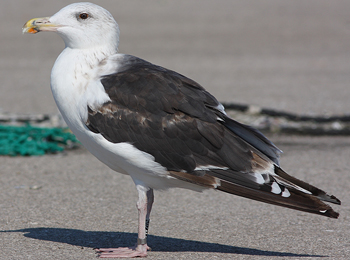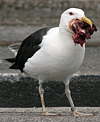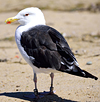Coordinators:
Jean-Michel Sauvage (France)
Morten Helberg (Norway)
Nils Helge Lorentzen (Norway)
Mars Muusse (Netherlands)
gbbg rings
gbbg PDF's
gbbg 1cy August
gbbg 1cy September
gbbg 1cy October
gbbg 1cy November
gbbg 1cy December
gbbg 2cy January
gbbg 2cy February
gbbg 2cy March
gbbg 2cy April
gbbg 2cy May
gbbg 2cy June
gbbg 2cy July
gbbg 2cy August
gbbg 2cy September
gbbg 2cy October
gbbg 2cy November
gbbg 2cy December
gbbg 3cy January
gbbg 3cy February
gbbg 3cy March
gbbg 3cy April
gbbg 3cy May
gbbg 3cy June
gbbg 3cy July
gbbg 3cy August
gbbg 3cy September
gbbg 3cy October
gbbg 3cy November
gbbg 3cy December
gbbg sub-ad January
gbbg sub-ad February
gbbg sub-ad March
gbbg sub-ad April
gbbg sub-ad May
gbbg sub-ad June
gbbg sub-ad July
gbbg sub-ad August
gbbg sub-ad September
gbbg sub-ad October
gbbg sub-ad November
gbbg sub-ad December
gbbg ad January
gbbg ad February
gbbg ad March
gbbg ad April
gbbg ad May
gbbg ad June
gbbg ad July
gbbg ad August
gbbg ad September
gbbg ad October
gbbg ad November
gbbg ad December
|
Great Black-backed Gull adult July
Comparing plumages when birds are in complete moult in July-August
July and August, mid-summer, all birds are in complete moult. The combination of very worn old feathers and recently replaced new feathers, together with moult gaps in many feather tracts make many birds look like fluffy messy feather balls rather than birds. By late July, many local populations see a new cohort of very fresh juveniles added to the group.
Although most of the breeding population are situated in Scadinavia (from a west European view), this is a surprsingly early and fast moulting species.
 |
 |
| Great Black-backed Gull (Larus marinus) JU827 1CY, August 28-30 2014, Boulogne sur Mer, France (Jean-Michel Sauvage). |
Great Black-backed Gull (Larus marinus) JA697 1CY, September 06 2008, Westkapelle, The Netherlands (Ies Meulmeester). |
| ID 1CY birds in July-August: birds recently left the colony in very fresh and crisp juvenile plumage. Easily told from 2CY birds by the full hand of pointed, first generation primaries showing a paler window in the inner feathers. No moult in primaries, no moult in secondaries and no moult in tail. |
 |
 |
| Great Black-backed Gull (Larus marinus) JT631 2CY, July 30 2014, IJmuiden, the Netherlands (Mars Muusse). |
Great Black-backed Gull (Larus marinus) 2CY, July 09 2013, Katwijk, the Netherlands (Mars Muusse). |
| ID 2CY birds in July-August: messy looking birds, showing moult gaps in many feather tracts by July. Inner primaries are new, overall dark grey but with arropw head at tips. New 2nd generation central primaries have relatively small white tips and have darker outerwebs, gradually dissolving in paler innerwebs and are brownish, not blackish as in in 3CY birds. Moult in primaries, and by late July often starts moult in secondaries and tail as well. New feathers in coverts are heavily barred, often densely marbled in the greater coverts; new feathers not adult-like plain blackish as in most 3CY birds. Iris dark. |
 |
 |
| Great Black-backed Gull (Larus marinus) DKC 3096165 3CY, July 27 2015, Boulogne sur Mer, France (Jean-Michel Sauvage). |
Great Black-backed Gull (Larus marinus) 3cy, July 24 2013, IJmuiden, the Netherlands (Mars Muusse). |
ID 3CY birds in July-August: combination of adult-like features and immature markings. Told from one year younger 2CY birds by pattern on fresh inner primaries, which appear adult-like grey with bold white tips. Central primaries have blackish outerwebs, sharply set from grey innerwebs and have bold white tips as well. Moult in primaries, and by last days of July often starts moult in secondaries and tail as well. New feathers in coverts are adult-like blackish. Iris remains dark.
Told from one year older 4CY birds by the pattern on the old feathers. Old outer primaries are faded brown, often with a small mirror on P10. Secondaries are old 2nd generation, showing large blackish centres on all feathers and dark shaft running to very tip. Old, second generation tail with distal band and proximal barring. Secondaries on 4CY birds are still old in July, retained 3rd generation, with blackish centres and broad white tips, like in adults (but pattren on secondaries in 4CY variable). By August new rectrices grow in, normally with less black in 3rd generation tail, some tail-feathers almost completely white. 4CY birds normally have more adult-like bill pattern. |
 |
 |
| Great Black-backed Gull (Larus marinus) JW209 4CY, August 28 2013, Boulogne sur Mer, France (Jean-Michel Sauvage). |
Great Black-backed Gull (Larus marinus) 4CY, July 30 2014, IJmuiden, the Netherlands (Mars Muusse). |
ID 4CY birds in July-August: exact ageing can be difficult in many birds, and these are better left grouped as 'sub-adults'. Still, the combination of old and new feathers may give hints, especially the pattern on old feathers. New 4th generation inner primaries growing in by July are adult-like dark grey, and there is slightly more black on the central primaries in this age class than in full adults. Upperparts and new coverts appear adult-like blackish as well, but new central tertials and new central greater coverts often show lining or markings again.
Best clue for ageing 4CY birds are old retained feathers: old 3rd generation outer primaries have (medium) mirrors on both P9 and P10. Secondaries are blackish with pale tips. Old wing-coverts and old outer primary coverts have extensive brown centres, and the condition is often obviously worse than in adult birds. Many birds show old lower tertials and the lesser coverts; these old feathers are worn but the brown markings in these locations are obvious in many birds. |
 |
 |
| Great Black-backed Gull (Larus marinus) 5T9 5CY, July 07 2015, Ipswich, MA (Billy Clifford). |
Great Black-backed Gull (Larus marinus) JC0S 5cy, August 02 2008, Boulogne sur Mer, France (Jean-Michel Sauvage). |
| ID 5CY birds in July-August: exact ageing can be difficult in many birds, and many 5CY birds will probably go unnoticed and are labelled 'adult'. Birds with overall adult plumage, both in old and new feathers, which combine this adult-like plumage with single patterned feathers in greater primary coverts or a single spot in the tail are very likely 5CY birds. |
 |
 |
| Great Black-backed Gull (Larus marinus) JV3C 8CY, August 25 2012, Boulogne sur Mer, France (Jean-Michel Sauvage). |
Great Black-backed Gull (Larus marinus) adult, July 30 2014, IJmuiden, the Netherlands (Mars Muusse). |
| ID 5+CY birds in July-August: exact ageing only when ring data are available. |
|
 Great Black-backed Gull (Larus marinus) 95C female: July & August 2013, Calais, France. Picture Jean-Michel Sauvage. Great Black-backed Gull (Larus marinus) 95C female: July & August 2013, Calais, France. Picture Jean-Michel Sauvage. |
 Great Black-backed Gull (Larus marinus)
Great Black-backed Gull (Larus marinus) Great Black-backed Gull (Larus marinus) 95C female: July & August 2013, Calais, France. Picture Jean-Michel Sauvage.
Great Black-backed Gull (Larus marinus) 95C female: July & August 2013, Calais, France. Picture Jean-Michel Sauvage. Great Black-backed Gull (L. marinus) BTO J0075 9CY, July-August 2014, Boulogne-sur-Mer, France. Picture: Jean-Michel Sauvage.
Great Black-backed Gull (L. marinus) BTO J0075 9CY, July-August 2014, Boulogne-sur-Mer, France. Picture: Jean-Michel Sauvage. Great
Black-backed Gull (Larus marinus) BTO
J0658 3cy,8cy,10cy, 2007, 2012, 2014, Boulogne-sur-Mer, France. Pictures: JM Sauvage. Bird now breeding in Boulogne!
Great
Black-backed Gull (Larus marinus) BTO
J0658 3cy,8cy,10cy, 2007, 2012, 2014, Boulogne-sur-Mer, France. Pictures: JM Sauvage. Bird now breeding in Boulogne! Great Black-backed Gull (Larus marinus) BTO HT85358 adult, July 26 2015 , Bullock Harbour, Ireland. Picture: Graham Prole.
Great Black-backed Gull (Larus marinus) BTO HT85358 adult, July 26 2015 , Bullock Harbour, Ireland. Picture: Graham Prole. Great Black-backed Gull (Larus marinus) 1JR 4CY-5CY, May 2014 & July 2015, Bullock Harbour, Ireland. Picture: Graham Prole.
Great Black-backed Gull (Larus marinus) 1JR 4CY-5CY, May 2014 & July 2015, Bullock Harbour, Ireland. Picture: Graham Prole. Great Black-backed Gull (Larus marinus) 2E2 adult, April 2012 - June 2015, Sandy Point Beach - Plum Island. Picture: Steve Arena, Jorge de Leon, Billy Clifford & Jeffrey Offermann.
Great Black-backed Gull (Larus marinus) 2E2 adult, April 2012 - June 2015, Sandy Point Beach - Plum Island. Picture: Steve Arena, Jorge de Leon, Billy Clifford & Jeffrey Offermann. Great Black-backed Gull (Larus marinus) 5T9 1cy-5cy, August 2011 - July 2015, Sandy Point - Plum Island, Ipswich, MA.
Great Black-backed Gull (Larus marinus) 5T9 1cy-5cy, August 2011 - July 2015, Sandy Point - Plum Island, Ipswich, MA.  Great Black-backed Gull (L. marinus) 7F8 7th pre-basic moult (7CY), July - August 2015, Barnstable County, Massachusetts. Picture: Steve Arena.
Great Black-backed Gull (L. marinus) 7F8 7th pre-basic moult (7CY), July - August 2015, Barnstable County, Massachusetts. Picture: Steve Arena. Great Black-backed Gull (Larus marinus) NLA 7.xx adult, July 30 2014, IJmuiden, the Netherlands.
Great Black-backed Gull (Larus marinus) NLA 7.xx adult, July 30 2014, IJmuiden, the Netherlands. Great Black-backed Gull (Larus marinus) adult, July 30 2014, IJmuiden, the Netherlands.
Great Black-backed Gull (Larus marinus) adult, July 30 2014, IJmuiden, the Netherlands. Great Black-backed Gull (Larus marinus) adult, July 30 2014, IJmuiden, the Netherlands.
Great Black-backed Gull (Larus marinus) adult, July 30 2014, IJmuiden, the Netherlands. Great Black-backed Gull (Larus marinus) adult, July 30 2014, IJmuiden, the Netherlands.
Great Black-backed Gull (Larus marinus) adult, July 30 2014, IJmuiden, the Netherlands. Great Black-backed Gull (Larus marinus) adult, July 30 2014, IJmuiden, the Netherlands.
Great Black-backed Gull (Larus marinus) adult, July 30 2014, IJmuiden, the Netherlands. Great
Black-backed Gull (Larus marinus) adult: July 11 2002, Le
Portel - Boulogne sur Mer, France (50.42 N - 01.34
E). The all white tail, the bold white tips on the primaries and the lack
of any black on the bill make it most likely to be in adult plumage.
Great
Black-backed Gull (Larus marinus) adult: July 11 2002, Le
Portel - Boulogne sur Mer, France (50.42 N - 01.34
E). The all white tail, the bold white tips on the primaries and the lack
of any black on the bill make it most likely to be in adult plumage. 










